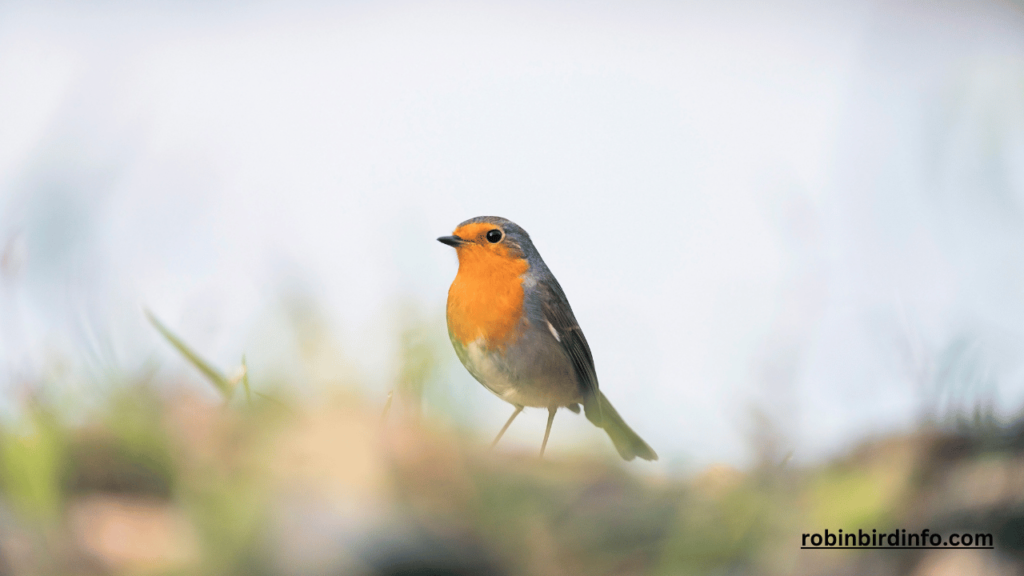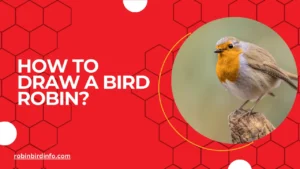Have you ever watched a Robin flitting through your backyard, its bright red breast catching the sunlight?
These seemingly ordinary birds lead fascinating lives, especially during springtime, when their world explodes with a vibrant symphony of song and territorial disputes.
But beneath the cheerful chirps and territorial squabbles lies a hidden story – the intricate dance of Robin mating. Unlike the elaborate displays of some animals, Robin courtship is a subtle yet remarkable process, a testament to the efficiency and beauty of nature’s design.
Understanding this process isn’t just about the birds and bees (well, technically, it’s not about bees at all!). By delving into the world of Robin mating, we gain a deeper appreciation for the delicate balance of the natural world, the fascinating strategies employed by these feathered friends to ensure the continuation of their species, and the vital role they play in our ecosystem.
So, grab a cup of coffee, settle in, and prepare to be surprised by the secrets hidden within the world of Robin courtship!
Contents
Section 1: Courtship and Pair Bonding
Territorial Behavior: Male Robins are highly territorial, especially during the breeding season. They establish and defend territories to attract mates and secure resources for their offspring.
Vocalizations: Male Robins use a variety of songs to attract females and defend their territories. These songs can be complex and varied, and they are used to communicate information about the male’s quality and fitness.
Visual Displays: In addition to vocalizations, male Robins may use visual displays to attract females. These displays can include posturing, wing flapping, and tail spreading.
Pair Bond Formation: Once a pair bond is formed, male and female Robins work together to build a nest, incubate eggs, and raise young. Factors influencing pair bond formation include the quality of the male’s territory, the strength of his song, and the timing of breeding.
Section 2: The Mating Process
Copulation: The mating process in Robins involves a rapid and precise transfer of sperm from the male to the female. The male mounts the female, and they align their cloacas to facilitate sperm transfer.
Timing of Mating: Mating typically occurs multiple times before and after egg laying. The timing of mating is influenced by various factors, including the female’s reproductive cycle and the availability of suitable nesting sites.
Sperm Competition: While sperm competition is less pronounced in monogamous species like Robins, it can still occur if a female mates with multiple males. In such cases, sperm from different males may compete to fertilize the egg.
Section 3: Egg Laying and Incubation
Nest Building: Both male and female Robins contribute to nest construction. They collect materials such as twigs, grass, and mud, and weave them together to form a cup-shaped nest.
Egg Laying: Female Robins typically lay one egg per day until the clutch is complete. The clutch size can vary, but it is usually between three and five eggs.
Incubation: Both male and female Robins share the responsibility of incubating the eggs. They take turns sitting on the eggs to keep them warm and protect them from predators.
Section 4: Parental Care and Nestling Development
Feeding and Protection of Young: Once the eggs hatch, both parents work together to feed and protect the nestlings. They bring insects and other small invertebrates to the nest and regurgitate them for the young birds.
Fledging and Independence: After about two weeks, the nestlings are ready to fledge. They leave the nest and begin to practice flying and foraging. The parents continue to feed and protect their young for a short period after fledging.
Factors Affecting Reproductive Success: Several factors can influence the reproductive success of Robins, including food availability, predation, weather conditions, and habitat quality.
Section 5: Conservation Implications

Habitat Loss and Fragmentation: Habitat loss and fragmentation can negatively impact Robin populations by reducing the availability of suitable nesting and foraging sites.
Climate Change: Climate change can alter Robin breeding seasons and affect the availability of food resources. Extreme weather events, such as droughts and floods, can also impact Robin populations.
Conservation Strategies: To protect Robin populations, it is important to conserve their habitats, reduce pesticide use, and minimize human disturbance. Additionally, providing artificial nest boxes and planting native plants can create suitable breeding and foraging habitats for Robins.
Conclusion
The mating behavior of Robins is a fascinating aspect of their life cycle. By understanding the intricate details of their courtship rituals, mating process, and parental care, we can appreciate the complexity of these birds and the challenges they face in their environment.
By taking steps to protect their habitats and reduce human impact, we can ensure the continued survival of these beloved birds.
FAQ’s
Do Robins mate for life?
While many bird species form lifelong pair bonds, Robins typically form new pairs each breeding season.
How often do Robins mate?
Robins may mate multiple times per day, especially during the peak breeding season.
Do Robins have a specific mating season?
Yes, Robins typically have a specific breeding season, which usually occurs in the spring.
What role does the male Robin play in raising the young?
Male Robins play an active role in raising their young. They help build the nest, incubate the eggs, and feed the nestlings.
How do Robins attract mates?
Male Robins attract mates through a combination of vocalizations, visual displays, and territorial behavior. They sing elaborate songs to advertise their presence and quality as a mate.
What is the lifespan of a Robin?
The average lifespan of a Robin is 2-3 years, although some individuals may live longer.








